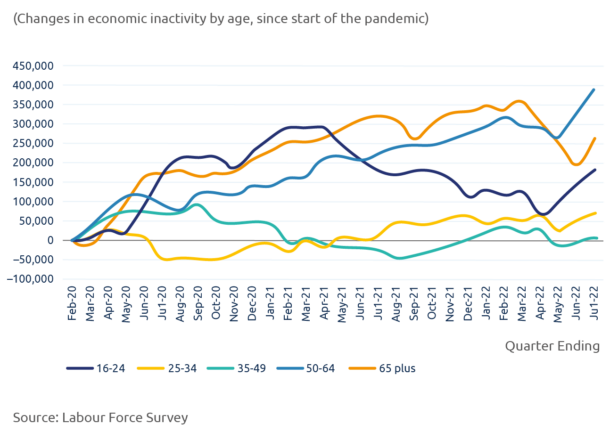Financial Wellness
How ill health is holding back many people from entering the workforce
More people are out of work and not looking for work due to long-term ill health than at any time

id
More people are out of work and not looking for work due to long-term ill health than at any time since at least 1992. Inclusive employers can make an important difference.
The number of people "economically inactive" due to ill health has reached 2.46 million 1. It has risen by 350,000 since the start of the pandemic. Around a quarter of these people say they want a job.
These figures are from the Labour Market Statistics, September 2022 2.
There are likely to be many reasons for this significant growth in worklessness due to ill health. These may include delays in treatment for chronic or work-limiting conditions; a deterioration in population health over recent years (perhaps due to long-Covid or poorer mental health coming out of the pandemic).
Other reasons may include people with health conditions staying away from work or losing work due to risks of infection; or people who want to work being unable to access specialist employment support.
Employment recovery
In March 2022, UK employment was rising and economic inactivity falling. Since then this trend has reversed dramatically.
Economic inactivity has risen to its highest level in more than five years, with long-term ill health now the main driver (see Figure 1).
Overall, economic inactivity is 640,000 higher than it was before the pandemic began.
Figure 1: Long-term sickness is now the main reason for economic inactivity

Worklessness among older people
Two-thirds of the overall rise in economic inactivity has been among those aged 50-plus (see Figure 2). Recent months have seen further rises in economic inactivity among those aged 50–64.
Very few economically inactive people in their 50s consider themselves to be retiring. Many would come back for the right job, and most are living on pensions/savings and are not on benefits.
For those aged 65-plus, economic inactivity appeared to be falling back, perhaps with the impact of the raising of the State Pension age to 66 between 2018 and 2020 starting to show through. But economic inactivity has recently increased for over-65s too.
Figure 2: Economic inactivity among people aged 50–64 has increased recently

Economic inactivity has been broadly flat among people under-50. However, the reasons for why people this age don’t work seem to be changing.
Looking after family/home has fallen as a factor, while ill health has increased. In other words, long-term ill health appears to be affecting people of all ages.
Conclusion
We need to do far more to boost participation in work. This will be good for those out of work who want a job, good for household incomes, the economy and inflation, and good for our public services.
More should be done to extend employment support and services to those out of work who want help to prepare for and get into work – especially older people and those with health conditions.
Employers can help by providing more inclusive and straightforward recruitment, better job design, more flexibility and security at work, greater access to training and improved workplace support.
1 People known as "economically inactive" are not in employment, but do not meet the internationally accepted definition of unemployment because they have not been seeking work within the last four weeks, and/or they are unable to start work in the next two weeks. The economic inactivity rate is the proportion of people aged between 16 and 64 years who are not in the labour force.
2 The analysis mainly draws on Labour Force Survey (LFS) data, which is the main household survey that collects official figures on employment, unemployment and economic inactivity and covers the period up to May 2022 (the most recent quarter being May to July 2022).





